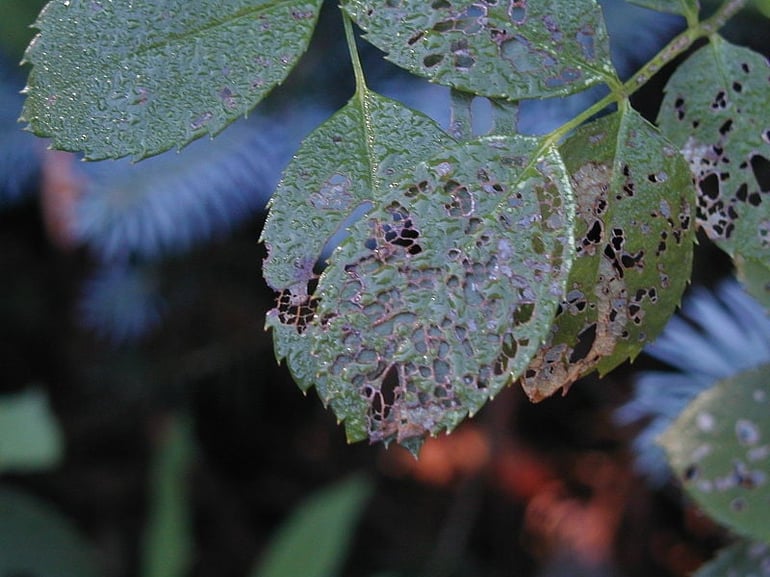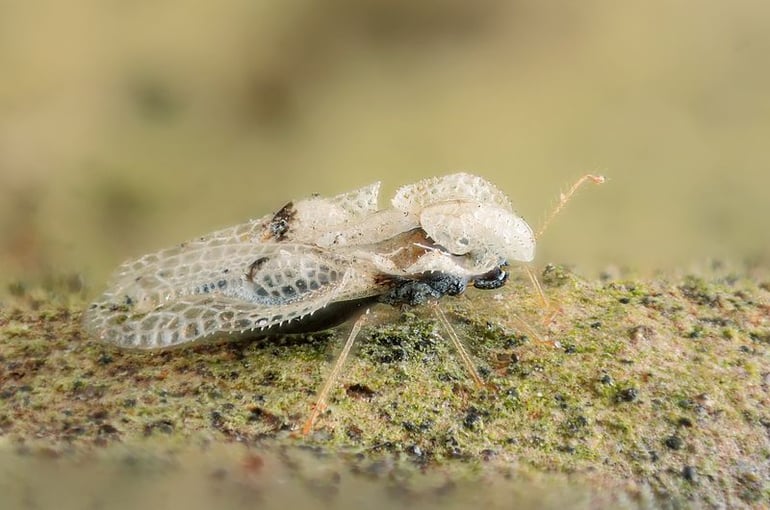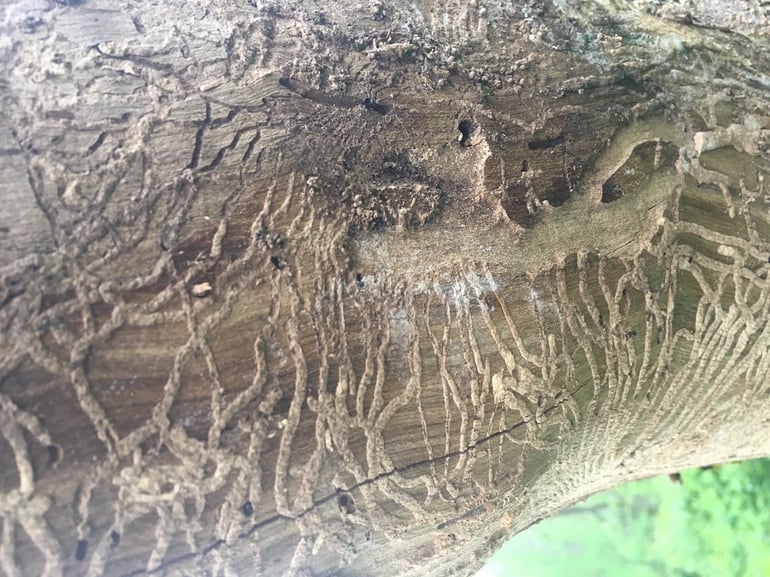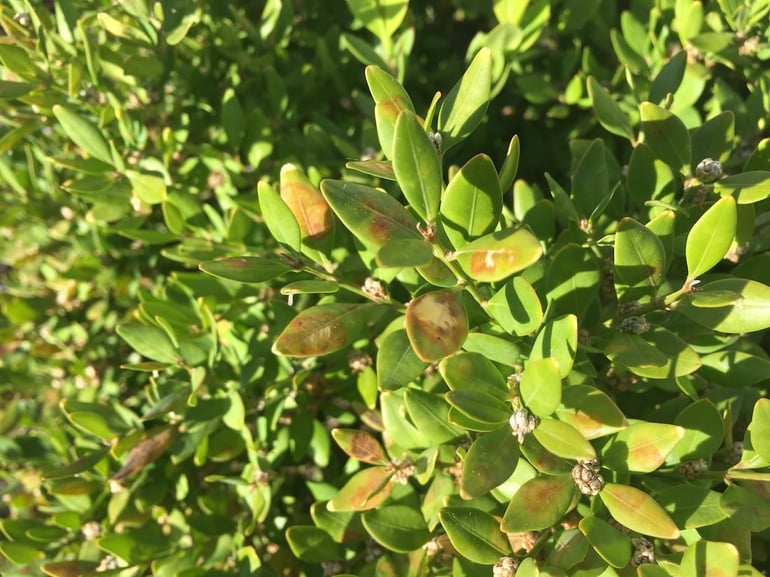Unbeknownst to you, tree and shrub damage may be taking place right under your nose from common culprits like disease, insects, and mites. Oftentimes, these problems can become widespread before you even notice them. That’s because there is a huge variety of shrub and tree insects and diseases that can wreak havoc - and many of them are not very easy to identify. In many cases, the damage has been going on for years until it becomes so severe that it’s obvious.
You probably don’t know how to tell if your tree has a disease or if insects or mites are causing problems, but there are some common signs you can look for which might help you spot a problem early.
While there are dozens of common issues, and we aren’t expecting homeowners to make exact diagnoses, we want to help you spot common problems before they’re too late.
Being armed with some basic diagnostic tools may help you avoid losing a mature plant that you value. It will also help you know when it might be time to call a tree service in Cincinnati, Dayton, OH, or Northern Kentucky. Here are 11 signs of common tree and shrub problems for you to get familiar with.
1. Chewed Foliage on Trees & Shrubs
If you notice shrub or tree leaves being eaten such as small holes or irregular, jagged edges, you could have a variety of different tree insect problems at hand. This might be an insect larvae, beetle, or even a weevil issue.

(Japanese Beetle damage on a rose leaf)
Different insects leave different chewing patterns and sometimes even chew on different parts of the leaf. Beetles, for instance, tend to feast on the middle part of foliage, skeletonizing the leaves, leaving only the veins. As long as you’re on the lookout for damage, an expert will be able to identify the exact cause and treat it.
2. Distorted Foliage
Aphids, which are small, soft-bodied insects that tend to multiply quickly, have piercing sucking mouthparts that they use to feed on plant sap. Some trees are sensitive to the saliva that aphids inject during feeding and may respond by puckering or distorting. This can begin to happen with only a few aphids. Because they can spread rapidly, early detection is key to saving your tree.
3. Stippled Dull Foliage
A mite infestation can cause foliage to become stippled, yellow, and dry. Mites suck juices from the plants, causing their foliage to become dull and ultimately curl and distort.

(Lace Bug on Sycamore Leaf)
Lacebugs and scale insects can have a similar impact. An expert can help determine if your tree is being eaten by insects, and exactly what kind of insect it is.
4. White Spots on Trees & Shrubs
If you see a suspicious abundance of white spots on your twigs, branches, or leaves, you may have an infestation of scale insects, which are parasites of plants and feed on internal plant fluids.
The white spots that you see are in fact thousands of tiny white bugs. They are often mistakenly identified by homeowners as mold or parts of the bark. Scale insects can be flat, small 1/16” long flecks, while others can be larger bumps almost the size of a ladybug, covering smaller twigs.
5. Cottony White Masses
If you’ve noticed cottony white masses in your trees, it’s possible you have a colony of insects like woolly Aphids, scale or adelgid taking up residence. These pests can be mistaken for fuzzy mold but are actually a type of sucking insect that live off of plant fluids. Egg sacks from certain insects can also appear as white cottony masses.
6. Holes in the Bark of Trees & Shrubs
Bark holes, sometimes also accompanied by sawdust coming from these holes, may seem like a telltale sign that your tree being eaten by insects. The common culprit is likely the larvae of wood-boring insect. The flying, adult tree borer insects emerge from inside the tree from small exit holes, and lay their eggs in cracks of bark or at the base of trees.

(Borer tunnels and exit holes)
When these larvae hatch, they work their way into the tree, tunneling and boring throughout the layer of the tree immediately behind the bark. This activity interrupts the tree’s vascular system, not allowing water or nutrients to pass borer paths. Eventually, this will cause large sections or the entire tree or shrub to die.
7. Sticky Substances
If you’re noticing a black, sooty mold on your landscape plants, what you’re actually seeing is the mold growing on “honeydew,” a substance excreted from certain insects like aphids, whiteflies or scale insects. These tree insects create this substance after feeding upon plant sugars and spotting it is a telltale sign that your shrub or tree is being eaten by insects.
8. Leaf Spots on Tree or Shrub Leaves or Needles
While some white or tan spots are more likely the sign of an insect problem, if you see orange, yellow, black, or brown spotting on your leaves, your tree or shrub may have a form of fungal disease.

(Boxwood leafminer damage)
Tree disease identification is important. Leaf spot diseases can weaken your tree by interrupting it’s photosynthesis process, ultimately leading to leaf loss. Some diseases can remain cosmetic for the most part, while others mean major health issues for plants.
9. Yellowing of Foliage
If you’ve witnessed an overall yellowing or even a complete lack of vibrant foliage color, there are a number of potential culprits. For one, it could simply be caused by either too much or too little moisture. But yellowing can also relate to pest problems, diseases, or even soil fertility.
10. Stunted Leaf Growth
There are a number of common culprits for leaves that look sickly or small and it could be related to insects, disease, or other health factors. If you’ve noticed your leaves are not reaching their full potential, it’s worth discussing your concerns with an expert.
11. Thin or Stunted Trees or Shrubs
Again, plants that are thinner or smaller than they should be can be the result of any one of these issues. It will take an expert assessment to determine what’s holding your trees and shrubs back. If you feel like your trees or shrubs are not looking like they should, it might be time for a more thorough assessment.
Tackling Tree Insects and Diseases
Diagnosing tree insects and diseases is no simple feat and something that should be reserved for the experts. However, being able to catch a problem before it gets too severe is incredibly helpful when it comes to potentially saving your trees and shrubs from serious damage.
As a homeowner on your property each day, you have the greatest ability to notice these issues and monitor your trees and shrubs more closely. If you suspect something is wrong, contact a tree service in Cincinnati, Dayton OH or Northern Kentucky. A reputable service would be happy to diagnose these issues for you.
Fortunately, many of these issues can be remedied with tree and shrub care. In fact, with a comprehensive program, a lot of these concerns can actually be prevented in the first place! The best strategy is to employ a program that will proactively manage these issues and provide optimum soil health along with regularly scheduled treatments to keep plants healthy.
At Oasis Turf & Tree, we take a proactive approach to tree and shrub care. We’re focused on preventing problems from occurring and catching them early when they do. We always have a close eye on your property when we’re there and by partnering with you (and your new early diagnostic skills), we’ll be able to tackle problems that challenge the health of your property and protect some of your property’s biggest assets–your trees and shrubs!
If you would like to find out more about our tree and shrub care program, call 513-697-9090 or contact us for a free estimate.
Image Sources: chewed leaves, lace bug
